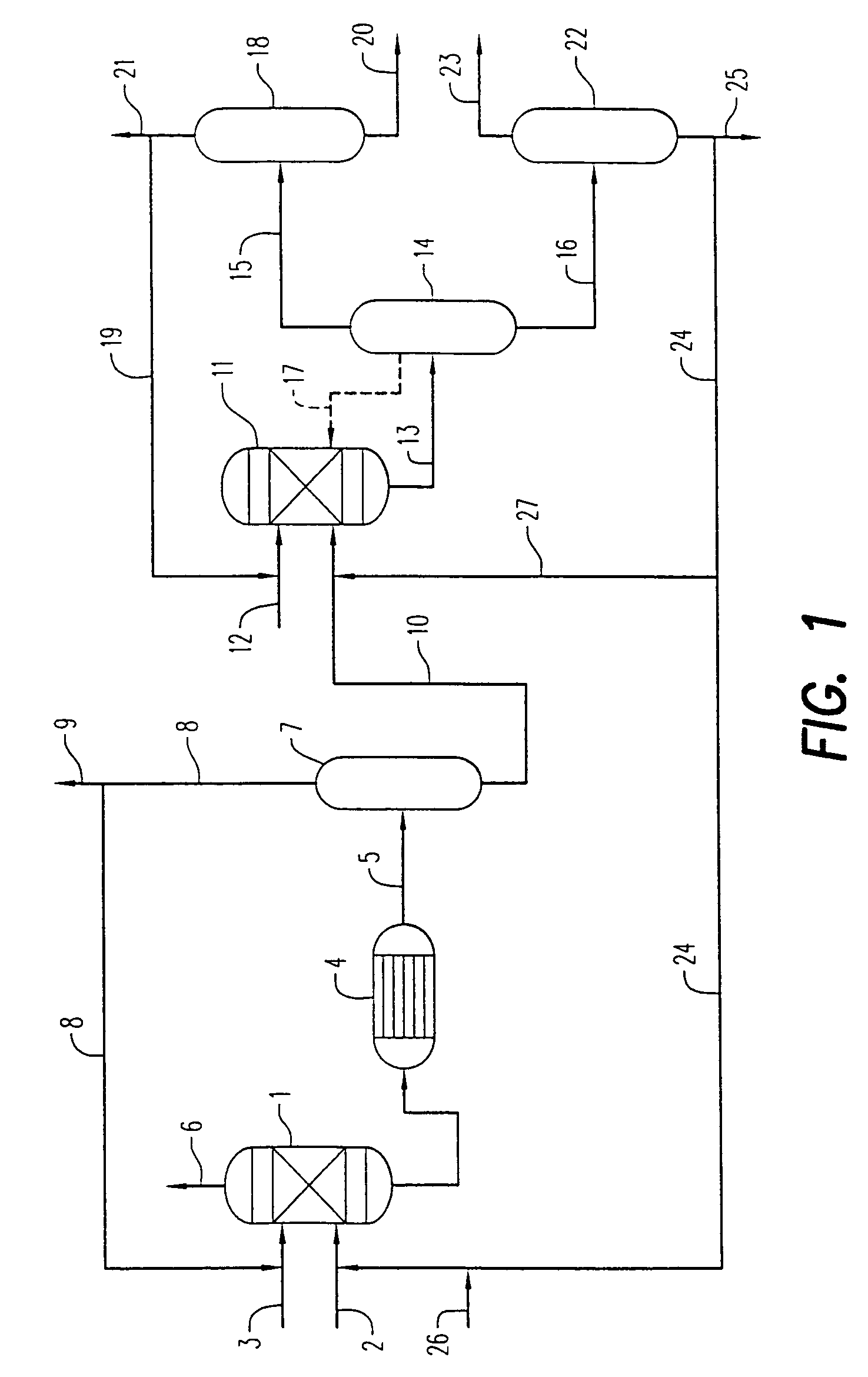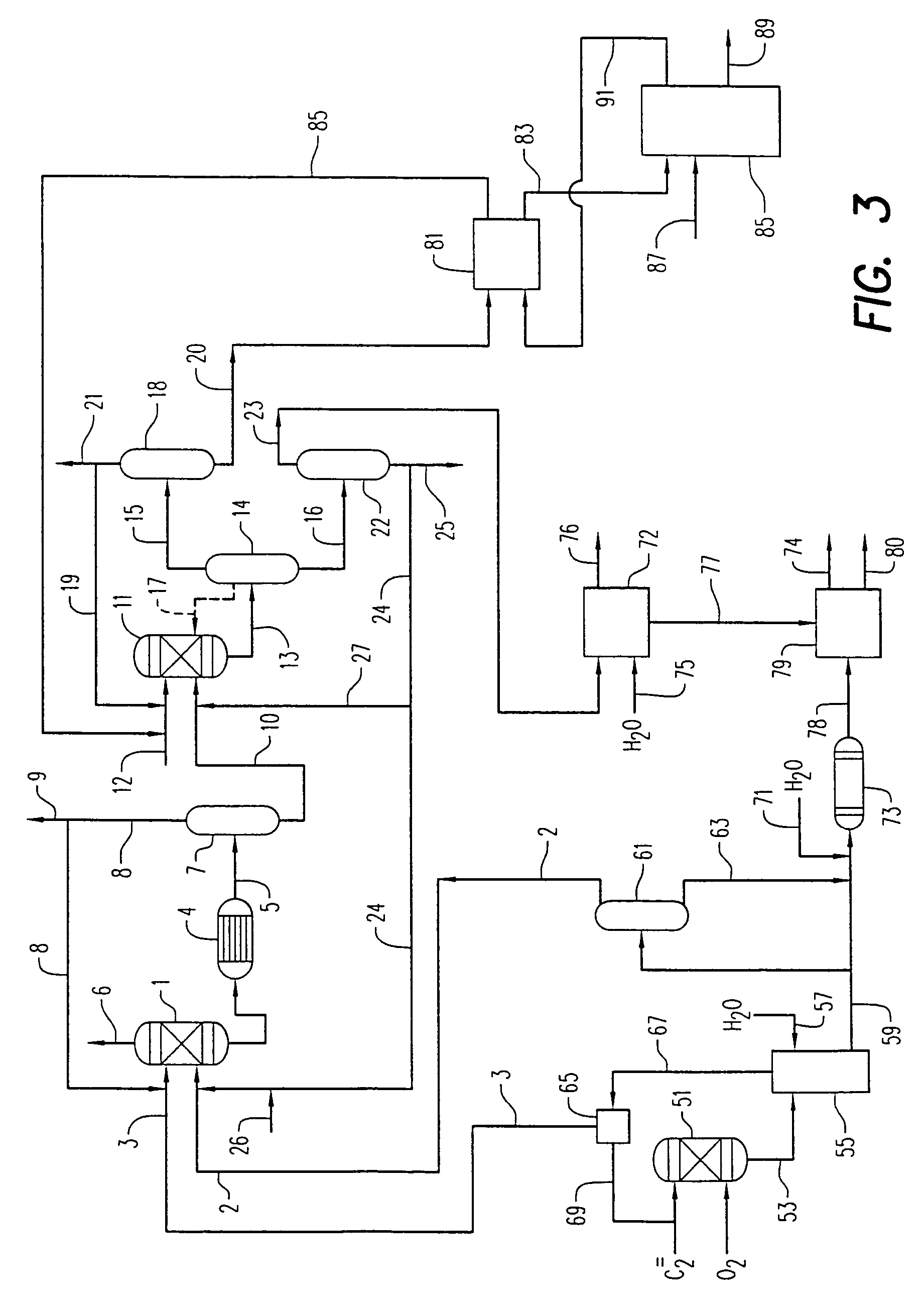Low corrosive integrated process for preparing dialkyl carbonates
a dialkyl carbonate, low corrosive technology, applied in the direction of climate sustainability, chemistry apparatus and processes, organic chemistry, etc., can solve the problems of limiting the catalytic cycle, requiring costly components, and requiring copper chloride catalyst-based oxidative carbonylation systems, etc., to achieve high productivity
- Summary
- Abstract
- Description
- Claims
- Application Information
AI Technical Summary
Benefits of technology
Problems solved by technology
Method used
Image
Examples
example 1
[0082]Set forth below are data from two commercial processes for the manufacture of dimethyl carbonate, as well as a sample of the crude dimethyl carbonate product produced by the unique low corrosive integrated process according to the present invention. Sample 1 below was generated from a standard process which employs a chloride copper catalyst, as well as a continuous HCl injection or mitigation step to maintain catalyst activity. Sample 2 was also generated from a standard process which employs a chloride copper catalyst, as well as a continuous HCl injection or mitigation step to maintain catalyst activity.
[0083]The analytical results are set forth below in Table 1:
[0084]
TABLE 1SAMPLE 1SAMPLE 2GC Purity99.83100TAN0.0427mg / g0.0996mg / gKOHKOHKF Water113ppm79.4ppm% Cl (XRF)12ppm7ppmMetals (ICP)Cd = 0.0068ppmCr = 0.0088ppmCo = 0.0060ppmFe = 0.0481ppmCu = 0.0091ppmK = 0.35ppmFe = 0.0767ppmMo = 0.020ppmK = 0.98ppmNi = 0.018ppmMg = 0.040ppmMn = 0.0046ppmNa = 0.378Zn = 0.0084ppmAppeara...
PUM
| Property | Measurement | Unit |
|---|---|---|
| pressure | aaaaa | aaaaa |
| temperature | aaaaa | aaaaa |
| pressure | aaaaa | aaaaa |
Abstract
Description
Claims
Application Information
 Login to View More
Login to View More - R&D
- Intellectual Property
- Life Sciences
- Materials
- Tech Scout
- Unparalleled Data Quality
- Higher Quality Content
- 60% Fewer Hallucinations
Browse by: Latest US Patents, China's latest patents, Technical Efficacy Thesaurus, Application Domain, Technology Topic, Popular Technical Reports.
© 2025 PatSnap. All rights reserved.Legal|Privacy policy|Modern Slavery Act Transparency Statement|Sitemap|About US| Contact US: help@patsnap.com



